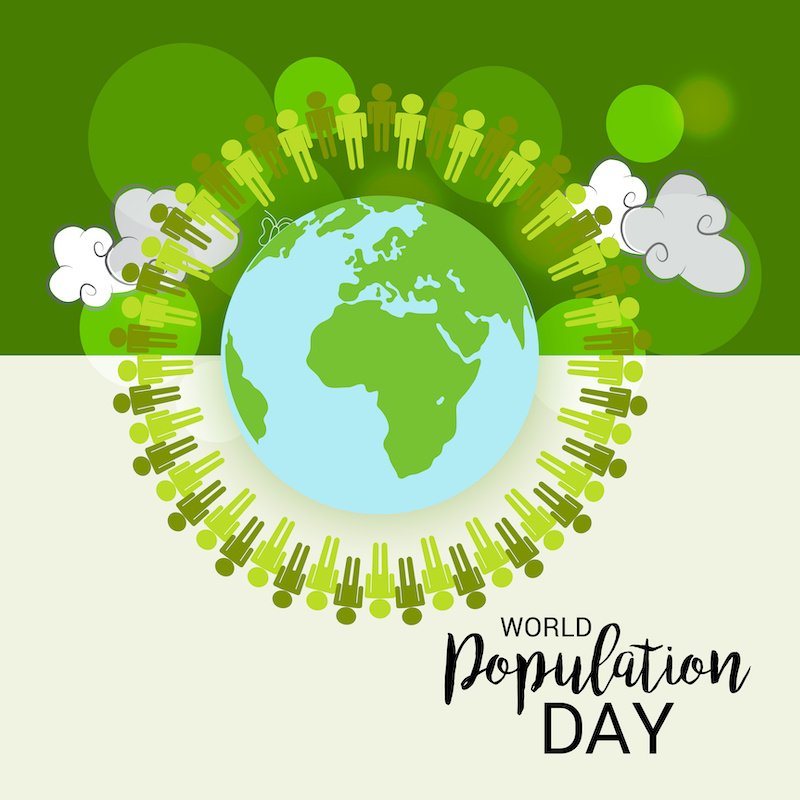Cause • Awareness • Conservation & The Environment • Global Focus
World Population Day is July 11, a calendar day that seeks to heighten awareness worldwide to the many issues derived from the urgency surrounding the global population escalation juncture and aftermath.
- Cause. This International Day was established by the Governing Council of the United Nations Development Programme in 1989. It gained massive momentum from all the interest garnered by Five Billion Day on July 11, 1987, which is the approximate date when the world’s population reached said figure. The 2020 World Population Day is calling for global attention to the unfinished business, 26 years later, of the 1994 International Conference on Population and Development, backed by 179 nations which recognized that reproductive health and gender equality were (still are) essential to sustainable development.
- Awareness. Heightened awareness on crucial population growth issues is the name of the game, i.e., family planning, maternal health, ageing, gender equality, poverty, migration, urbanization, and human rights. Facts: Rough world population estimates indicate that it spikes by about 100 million every 14 months or 83 million per year. It reached 7.4 billion on February 6, 2016; 7.5 billion at 4:21 pm on April 24, 2017; and 7.7 billion in 2019. Even if fertility rates continue to decline, global population is expected to reach 8.6 billion by 2030, 9.8 billion by 2050, and 11.2 billion by 2100, according to the medium-variant projection.
- Conservation & The Environment. Environmental destruction is a fact. The most sustainable methods of land management cannot cope with soaring demands. Every year, an area the size of Ohio (the UN use Austria and Belgium combined) is cleared for new farms; many others are becoming deserts due to overuse by people and animal grazing. However, denizens in countries with critically unsuitable farmland will increase by 600 million-1 billion by 2025. Likewise, 1.8 billion people live in regions of the world with alarmingly low levels of forest cover (3 billion projected by 2025). The world’s human population is growing at a rate of 1.9% per year. New arrivals require food, energy, clean water, sanitation, clothing, housing, schooling, healthcare, and employment. Added to the waste and pollution they produce, this puts massive strain on the environment and squeezes out other species.
- Global Focus. Twenty-six years after the landmark International Conference on Population and Development, the UN Population Division continues to work closely with agencies, funds, programs, and bodies of the United Nations system and with all sorts of governments worldwide to implement the ambitious population control and awareness points raised back then and in the follow-up. UN missions and offices, public offices, researchers, the media, representatives the world over and the public at large consult the Population Division on a broad number of topics, including population projections and analyses, as well as global development issues.
Sources:
https://www.un.org/en/events/populationday/
https://en.wikipedia.org/wiki/World_Population_Day
https://www.informaction.org/index.php?main=population_gen&subject=Population%20growth


